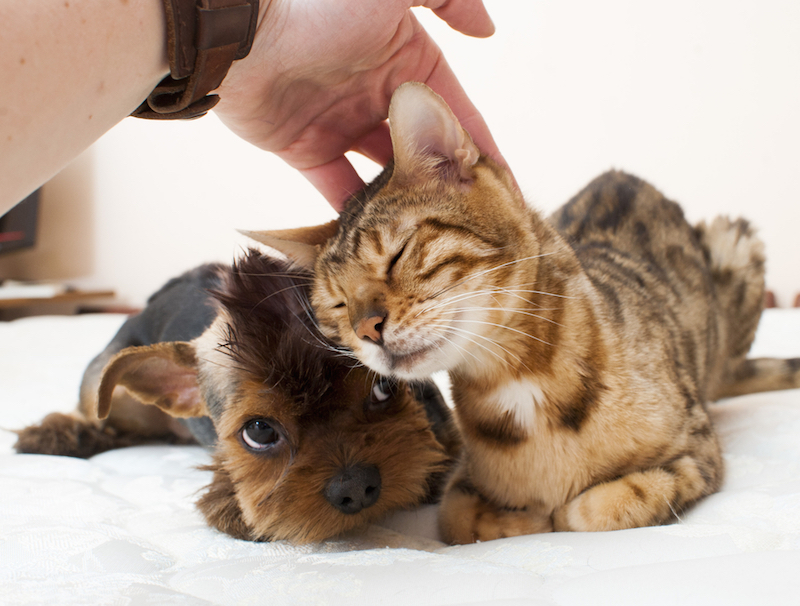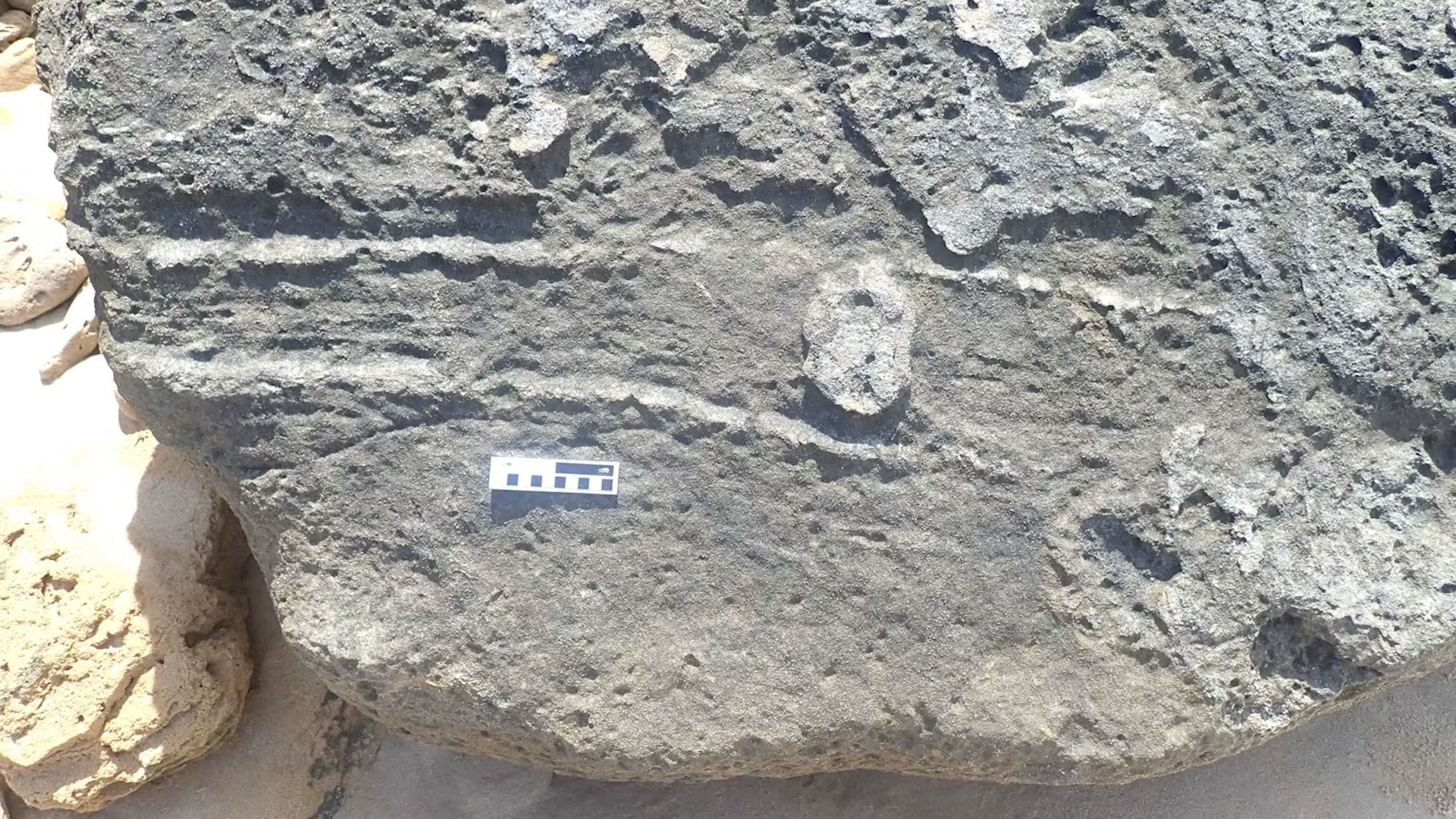Why Do Cats and Dogs Love a Good Head Scratch?

Why do some cats and dogs practically melt with joy when they get a good head scratch?
The answer is different for Fluffy than it is for Fido, although they do share a few reasons for why they sink into complete bliss whenever their furry little heads are massaged.
For instance, petting a cat or a dog on the head gives the animal attention, which it might crave, said Dr. Nicholas Dodman, a professor emeritus at the Cummings School of Veterinary Medicine at Tufts University. Moreover, it's difficult for cats and dogs to touch the tops of their heads with their paws, and it's impossible for them to lick it with their tongues.
Related: Does catnip really make cats 'high'?
"It's a relatively inaccessible area that you can reach for them, so you're doing them a favor in that sense," Dodman told Live Science.
From there, the reasons cats and dogs like a good head rub diverge. For cats, a friendly caress on the head, cheeks or chin might remind them of their grooming routine, when they lick the backs of their paws and rub their heads. The head scratch could also remind them of their mothers, who licked the tops of their heads when they were kittens, said Dodman, who is the author of "Pets on the Couch: Neurotic Dogs, Compulsive Cats, Anxious Birds, and the New Science of Animal Psychiatry" (Atria Books, 2016).
So, cats may perceive a head scratch as either a "personalized grooming service provided by [the] owner," or see the owner as their mom, because "that's what mummy cat does," Dodman said.
Get the world’s most fascinating discoveries delivered straight to your inbox.
In addition, while cats have scent glands all over their bodies, these glands are concentrated in a cat's forehead, cheeks and chin, said Mikel Delgado, a doctoral candidate in psychology at the University of California, Berkeley, who is also a certified cat behavior consultant.
"When they're rubbing on things — be it your hand, the corner of a wall or on another cat — they're spreading their scent," Delgado said. "Leaving scent is a way that they mark their territory, and we believe that it has some calming effects for them."
But one head rub stands above the others. When a cat rubs its forehead on a human — a friendly social behavior known as bunting — "that's a very loving gesture," Delgado said. These behaviors show that head rubbing serves a dual purpose for felines: It marks their territory, and expresses friendly feelings, she said.
Doggy pats
Just like bunting in cats, dogs may nuzzle their owners with their heads. This is usually a sign of affection and bonding, said Leni Kaplan, a lecturer and clinician in the Department of Clinical Sciences at the Cornell University College of Veterinary Medicine in Ithaca, New York.
However, not all dogs enjoy getting head pats. "Some dogs do not like their head scratched (or approaching them from the top), because it can appear to be a dominating gesture," Kaplan noted. For instance, at the dog park, some dogs try to dominate other dogs by putting their paws on top of them, and they may perceive a head pat from a human as a dominating gesture, Dodman said. [Anxiety May Give Dogs Gray Hair]
Still, "I find that most dogs (especially when their owners are handling them), love their head and ears scratched — it is a sign of affection, bonding and attention," Kaplan said.
Dogs that are not properly socialized, or that tend to be afraid of new people or situations, might not like to have their heads scratched, Kaplan said. This also goes for dogs that are bopped on the head as a form of punishment, she added.
Overall, it's best to read the animal's body language to see what it prefers, especially if the animal looks like it's going to scratch or bite you, the experts said.
For pets that savor a good head scratch, remember that your dog or cat may just have an itch that it can't reach — an indication that puss or pooch may need a medical checkup for possible allergies or irritated, red skin.
"I always joke, 'Is it love, or just itchy?'" Delgado said.
Original article on Live Science.

Laura is the archaeology and Life's Little Mysteries editor at Live Science. She also reports on general science, including paleontology. Her work has appeared in The New York Times, Scholastic, Popular Science and Spectrum, a site on autism research. She has won multiple awards from the Society of Professional Journalists and the Washington Newspaper Publishers Association for her reporting at a weekly newspaper near Seattle. Laura holds a bachelor's degree in English literature and psychology from Washington University in St. Louis and a master's degree in science writing from NYU.

